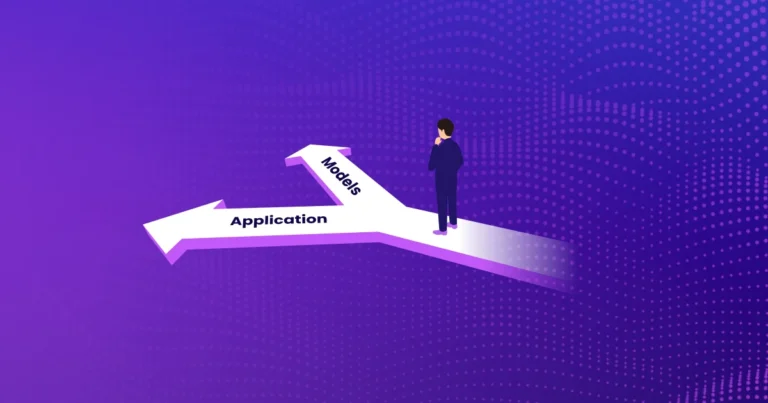5G Standalone (5G SA) was supposed to unlock the full 5G vision – ultra-low latency, massive IoT, network slicing, and more. Yet as of 2025, far fewer carriers have rolled out 5G SA than anticipated. Only about 77 mobile operators across 43 countries have deployed 5G SA so far, with developing markets barely represented. Clearly, 5G SA adoption is stuck in the slow lane due to very real challenges on the ground.
This post examines the key reasons behind 5G SA’s sluggish uptake – from operational complexities (like integrating IMS/VoNR) to legacy IT hurdles and financial constraints. It then explores how a cloud-native, SaaS convergent charging system (CCS), like Totogi’s, removes some of these roadblocks. While the charging is not the be-all-end-all of a 5G core, it is the beating heart of any mobile network, and a modern, SaaS CCS has the potential of removing much of the friction and roadblocks delaying 5G SA rollouts.
Why 5G Standalone is stalling: key roadblocks
Operational complexity and skills gaps
Deploying 5G SA isn’t a simple “flip the switch” upgrade – it’s a core network transformation. Operators must deploy an entirely new cloud-native 5G core with various microservice-based functions. Running this next-gen core is operationally complex, especially for teams accustomed to traditional telecom systems. The shift to a cloud-native network means learning to manage containers, Kubernetes clusters, and continuous software updates – skills many telco IT teams are still developing. Not surprisingly, a lack of in-house cloud expertise is a major hurdle: industry observers note that a “lack of skilled workforce” is hindering many 5G SA rollouts.
Traditional mobile core and billing platforms also require manual configuration for every new service or update. That approach barely worked in 4G, and in the 5G era of network slicing and on-demand services it simply breaks down. Legacy charging and policy systems often rely on cumbersome, manual configurations and rigid architectures that hinder the launch and evolution of innovative services, making new 5G services slow, expensive, and error-prone to launch. When every tweak demands expert intervention and weeks of testing, it’s no wonder many operators hesitate to dive in.
IMS and VoNR integration hurdles
Voice service is another major roadblock for 5G SA. Standalone 5G requires an IP Multimedia Subsystem (IMS)-based solution for voice (VoNR), which is the only standardized voice solution for 5G SA networks. Operators that haven’t already deployed IMS for VoLTE now face the daunting task of doing so, and those already running an IMS face considerable challenge: even though VoLTE and VoNR can both rely on the same IMS platform, their integrations are very different. In 4G, the IMS is anchored with the Evolved Packet Core (EPC), while in 5G the IMS must integrate with the new 5G Core functions ( AMF, SMF, UPF, PCF, CHF and others). This means considerable integration efforts and extensive tests to ensure VoNR and fallback to LTE work seamlessly. No one wants to rush a change that could disrupt voice service quality.
Moreover, 5G SA must coexist with 4G LTE for years. Dual connectivity and handovers between two different core networks add further complexity. Every interface – from subscriber databases to billing systems – needs updating or mediation to communicate with the new 5G core. With so much integration work to do, operators have a strong incentive to move slowly until they’re confident everything works end-to-end.
Legacy IT and financial pressures
Many operators are also held back by legacy IT systems not built for 5G’s agility or scale. Older BSS systems struggle to support new 5G use cases. Upgrading them is costly and risky – but without it, 5G SA can’t reach its potential.
Meanwhile, deploying a 5G SA core (plus the required IMS and IT upgrades) is a massive investment with an uncertain return. Early 5G use cases like faster mobile data haven’t created new revenue, and advanced services for enterprises or IoT are still emerging. So executives view Standalone as a nice-to-have rather than an urgent must-have. As one industry panel noted, going SA demands substantial capital, and the path to a clear ROI remains uncertain, with high upfront costs and complexity making the leap complex and daunting. If 5G Non-Standalone already meets current needs, there’s little pressure to invest more – which leads to very cautious adoption.
How SaaS-based convergent charging reduces friction
No single move will eliminate all 5G SA challenges, but modernizing the charging system can ease many pain points. Adopting a cloud-native convergent charging system delivered as a SaaS can simplify or remove several of the hurdles we’ve discussed. Here’s how:
Convergent 4G/5G charging for phased migration
A modern convergent charging platform can handle both legacy and 5G networks in parallel – a triple-stack solution. Some 5G-era charging systems support traditional 2G/3G/4G/LTE OCS protocols alongside the new 5G Charging Function APIs in one product. This allows an operator to run a single charging system for both the old and new core, enabling a phased migration. There’s no need for a risky “big bang” billing swap on day one of 5G SA. 5G traffic can be introduced gradually while all usage – 4G or 5G, voice or data – still flows through the same charging engine. Dual-stack support avoids maintaining parallel billing stacks or building clunky bridges, allowing operators to upgrade at their own pace with less risk.
Totogi Charging-as-a service comes with pre-built adapters to bridge legacy interfaces (like Diameter from IMS or the 4G core) to the 5G core’s new APIs. This makes the charging platform a facilitator rather than a bottleneck for new 5G services.
Zero infrastructure & continuous updates
Unlike on-premise charging systems and most cloud-native chargers, a SaaS charging model requires zero infrastructure from the operator. The charging function is hosted in the cloud by the provider, so there are no servers to install and no Kubernetes clusters to manage. There’s no infrastructure to manage (no servers, clusters, or storage) – offloading a major burden from the operator’s team.
A true SaaS charging solution also provides automatic, continuous updates. Traditional charging platforms get infrequent upgrades (often involving downtime and high support costs). By contrast, a cloud-native SaaS CCS is continuously updated by the vendor via CI/CD, with zero downtime. The operator is always on the latest version without ever performing a manual upgrade. New features and fixes appear as soon as they’re released, keeping the charging system in sync with the cutting edge of 5G with no extra effort from the operator.
Elastic scaling and converged capabilities
5G’s world of massive connectivity and unpredictable usage demands a charging system that scales elastically. A SaaS charger automatically handles spikes in transaction volume by scaling out cloud resources, then scales back when traffic volume decreases . No more over-provisioning hardware or paying for idle capacity. And since SaaS pricing is typically usage-based, costs align with actual traffic levels.
Built-in PCF: simplifying policy and charging together
In 5G SA, the Policy Control Function (PCF) is critical for enforcing QoS and policy rules, especially for services like VoNR or slice-based offerings. Traditionally, policy and charging live in separate systems, forcing operators to duplicate configuration and manage complex integrations. That’s slow, error-prone, and costly.
A SaaS charging platform with a built-in PCF flips the script:
- No duplicate integrations – charging rules and policy enforcement share the same system.
- Simpler VoNR/IMS rollouts – QoS and charging are aligned out of the box.
- Unified NSA + SA control – one policy/charging plane works across both 4G and 5G.
- Faster innovation – new offers with slice-specific QoS guarantees can be launched quickly without policy/charging mismatches.
By converging PCF and charging in one SaaS product, operators eliminate one of the most painful integration hurdles of 5G SA — and gain a cleaner path to advanced services.
Multi-tenancy: serving every customer, fast
5G SA opens the door to new business models — private networks, MVNOs, neutral hosts, Industry 4.0 campuses, and more. Each of these is essentially a tenant with its own policies, product catalog, charging rules, and reporting needs. Legacy charging systems force operators to stand up separate stacks for each tenant, which takes months and eats up resources.
A SaaS-based, multi-tenant charging system solves this elegantly. One shared, cloud-native platform can securely host multiple tenants with strict data isolation. Operators can spin up a new MVNO, enterprise campus, or slice customer in hours — not months — without deploying parallel systems. This agility is critical in 5G SA, where the ability to onboard partners and enterprises quickly is a competitive advantage.
Transaction-based pricing: killing the CAPEX burden
One of the biggest CFO concerns with 5G SA is the cost angle: deploying a new core and supporting systems typically means massive upfront CAPEX with uncertain ROI. Traditional charging systems are sold on perpetual licenses and oversized capacity planning – you pay for peak load whether you use it or not.
A SaaS charging service flips this with transaction-based pricing. Operators pay as they go, based on actual usage or subscribers, not on speculative forecasts. This turns charging into a predictable OPEX line item aligned with real revenue. It reduces financial risk, lowers the barrier to experimentation, and makes it feasible for even smaller operators and MVNOs to roll out 5G SA services without betting the farm.
Being convergent, one charging platform can cover all scenarios (prepaid, postpaid, online, offline) across all access types. Fewer disparate systems mean fewer integration points and more consistent rules. Multi-tenancy also enables an operator to support multiple segments (consumer, enterprise, MVNOs, private slices) on one platform. No need to deploy separate stacks – new tenants can be onboarded via configuration in hours. This agility in the BSS layer makes it much faster to roll out new 5G offerings without lengthy IT projects.
Conclusion
5G Standalone will ultimately unlock the next generation of mobile services – from ultra-reliable low-latency apps to private network slices – but getting there is challenging. The slower-than-expected rollout of 5G SA comes down to practical realities: operators must overhaul core infrastructure, master new cloud tech, implement IMS for voice, revamp legacy IT, and spend big money with no guaranteed short-term payoff.
However, there are ways to reduce the friction and make the path to Standalone smoother. Embracing a cloud-native, multi-tenant and SaaS-based convergent charging model is one such step. By easing migration (via dual-stack support), offloading operational complexity, and scaling on demand, it addresses several key barriers holding 5G SA back. Adopting a modern charging platform like Totogi’s won’t guarantee overnight success, but it removes a significant burden – freeing operators to focus on building the network and innovating in services instead of wrangling their billing system.
Embracing new approaches like SaaS charging is a bold yet pragmatic strategy to chip away at 5G SA’s adoption hurdles. Operators who embrace this approach will be well positioned to realize the promise of Standalone 5G.





